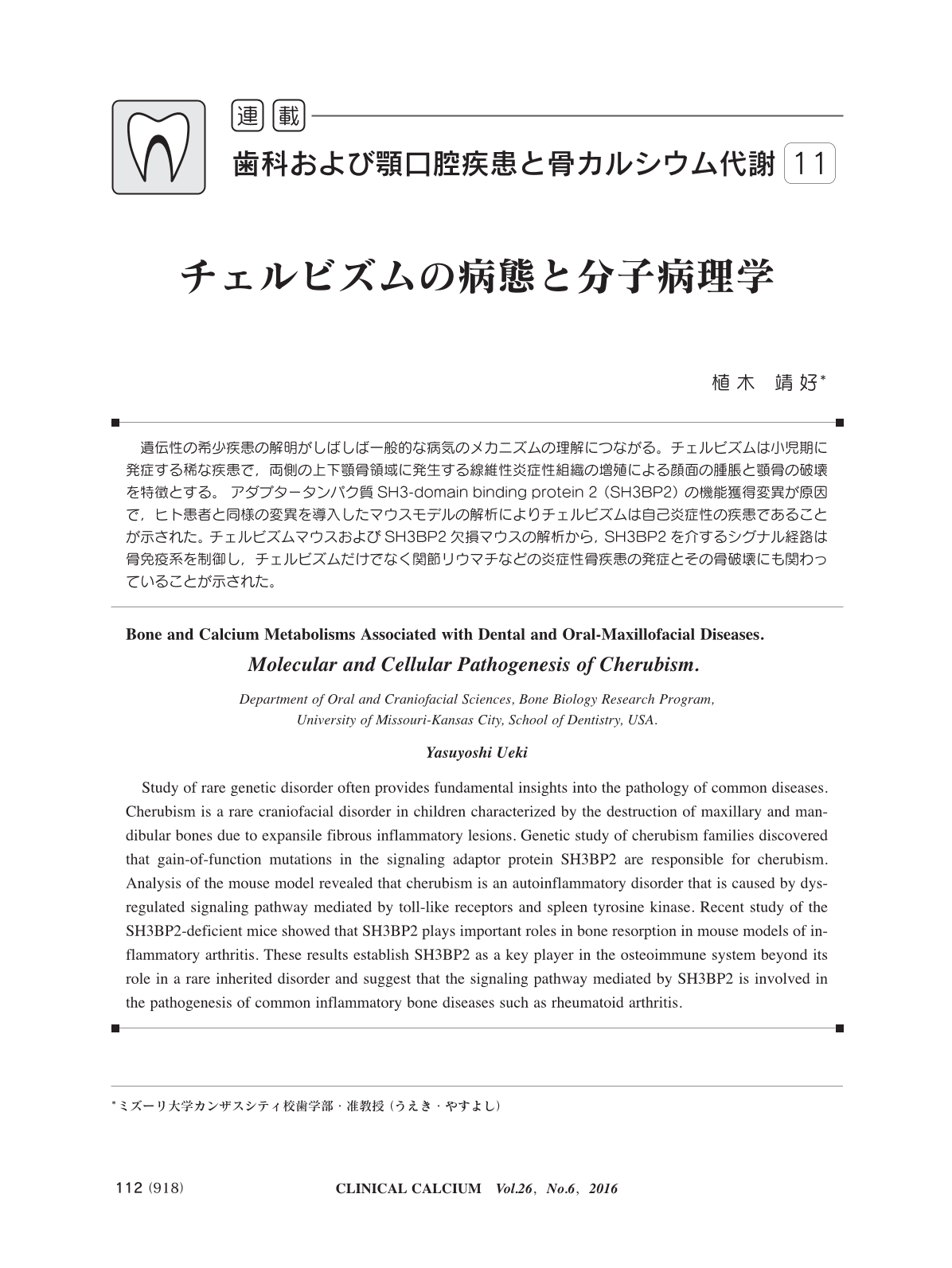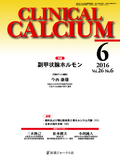Japanese
English
- 有料閲覧
- Abstract 文献概要
- 1ページ目 Look Inside
- 参考文献 Reference
遺伝性の希少疾患の解明がしばしば一般的な病気のメカニズムの理解につながる。チェルビズムは小児期に発症する稀な疾患で,両側の上下顎骨領域に発生する線維性炎症性組織の増殖による顔面の腫脹と顎骨の破壊を特徴とする。 アダプタータンパク質SH3-domain binding protein 2(SH3BP2)の機能獲得変異が原因で, ヒト患者と同様の変異を導入したマウスモデルの解析によりチェルビズムは自己炎症性の疾患であることが示された。チェルビズムマウスおよびSH3BP2欠損マウスの解析から,SH3BP2を介するシグナル経路は骨免疫系を制御し,チェルビズムだけでなく関節リウマチなどの炎症性骨疾患の発症とその骨破壊にも関わっていることが示された。
Study of rare genetic disorder often provides fundamental insights into the pathology of common diseases. Cherubism is a rare craniofacial disorder in children characterized by the destruction of maxillary and mandibular bones due to expansile fibrous inflammatory lesions. Genetic study of cherubism families discovered that gain-of-function mutations in the signaling adaptor protein SH3BP2 are responsible for cherubism. Analysis of the mouse model revealed that cherubism is an autoinflammatory disorder that is caused by dysregulated signaling pathway mediated by toll-like receptors and spleen tyrosine kinase. Recent study of the SH3BP2-deficient mice showed that SH3BP2 plays important roles in bone resorption in mouse models of inflammatory arthritis. These results establish SH3BP2 as a key player in the osteoimmune system beyond its role in a rare inherited disorder and suggest that the signaling pathway mediated by SH3BP2 is involved in the pathogenesis of common inflammatory bone diseases such as rheumatoid arthritis.



